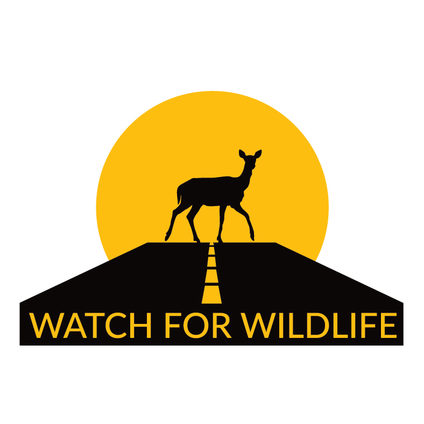
Sierra Club’s Wanda Baxter reports on her experience at the International Conference on Ecology and Transportation Conference in Salt Lake City – and the new collaborative opportunities created and connections made for our Watch for Wildlife program.
A couple of weeks ago I was lucky to travel to Salt Lake City, Utah to attend the International Conference on Ecology and Transportation. I went as a representative of Sierra Club Canada Foundation and the Watch for Wildlife, Nova Scotia program to connect with other organizations and experts working in the developing field and practice of road ecology; and to learn what I could from the world’s leaders in this field so I can work to bring these ideas home.
The impacts of roads and driving on wildlife are significant and potentially devastating to some species. Driving and road building have expanded exponentially in the last 100 years, and the cumulative impacts of the effects on natural ecosystem processes and wildlife - due to direct mortality, loss of habitat, fragmentation of habitat and genetic 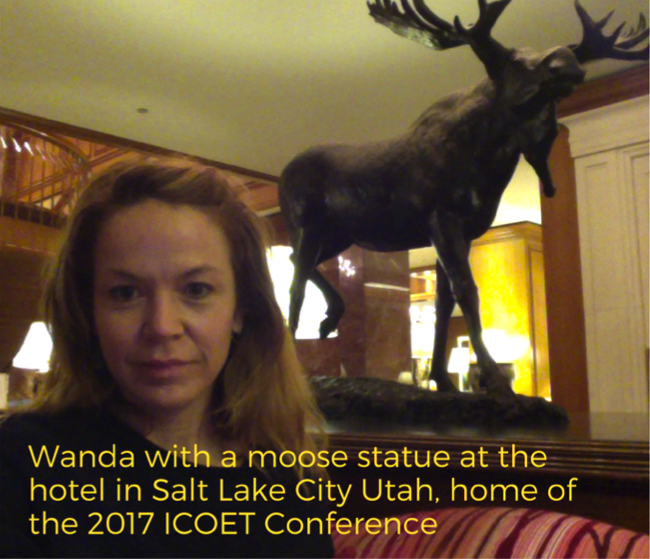 segregation due to avoidance of roads - have been largely overlooked. The impacts on drivers and the economy have also been hidden from view.
segregation due to avoidance of roads - have been largely overlooked. The impacts on drivers and the economy have also been hidden from view.
Initiated in 1996 as transportation department staff and wildlife biologists began seeing the data, the impacts of collisions and road building on wildlife prompting the need for collaboration and new approaches to deal with the problem, the International Conference on Ecology and Transportation (ICOET) has been the driving force for knowledge sharing and network development in this field. It brings together researchers, transportation engineers and planners, policy experts, ecologists, and NGOs to create an international network of people working in this field and is an exciting and important meeting of people who might otherwise be working in isolation.
I arrived the day before the conference to do a four-hour training session with top experts, and it was a fast-paced learning session taught by experienced practitioners. 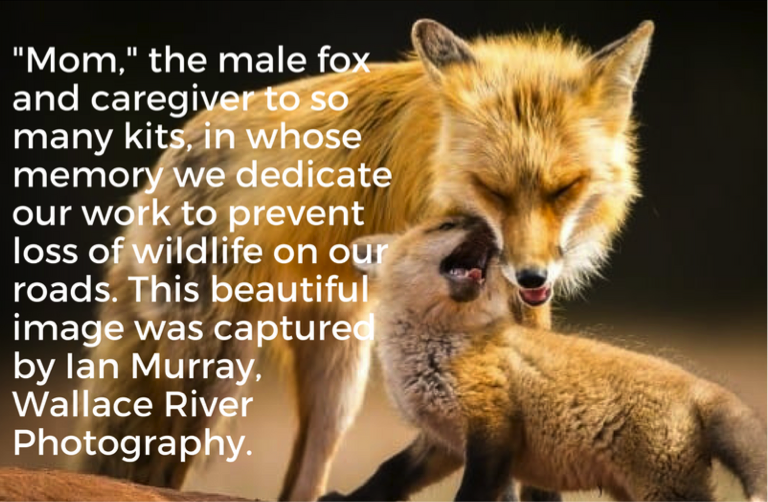 The well-organized presentations introduced wildlife behaviour in response to road building, best practices for collision mitigation infrastructure and monitoring, budget considerations, species-specific fencing and wildlife crossing options.
The well-organized presentations introduced wildlife behaviour in response to road building, best practices for collision mitigation infrastructure and monitoring, budget considerations, species-specific fencing and wildlife crossing options.
With my mind full of new knowledge about fencing options, wildlife behaviour, collision mitigation efforts that don’t work (e.g. static road signs – unless in tourist areas, fencing that isn’t maintained or monitored, public education without collision mitigation infrastructure,) and new faces and names I wouldn’t remember, I went for a run from downtown Salt Lake City up to the University of Utah campus. I like to run in new places to get my bearings, and Salt Lake City is one of the most beautiful places I’ve been. Snow-capped mountains even at the end of May surround the bowl of the city, and the view of sky is 360 degrees. The University campus is located up into the ridge of mountains and when I got to the top I turned to look back down at the city. The sun beginning to set on the wide, flat lake was beautiful enough to take my breath away. 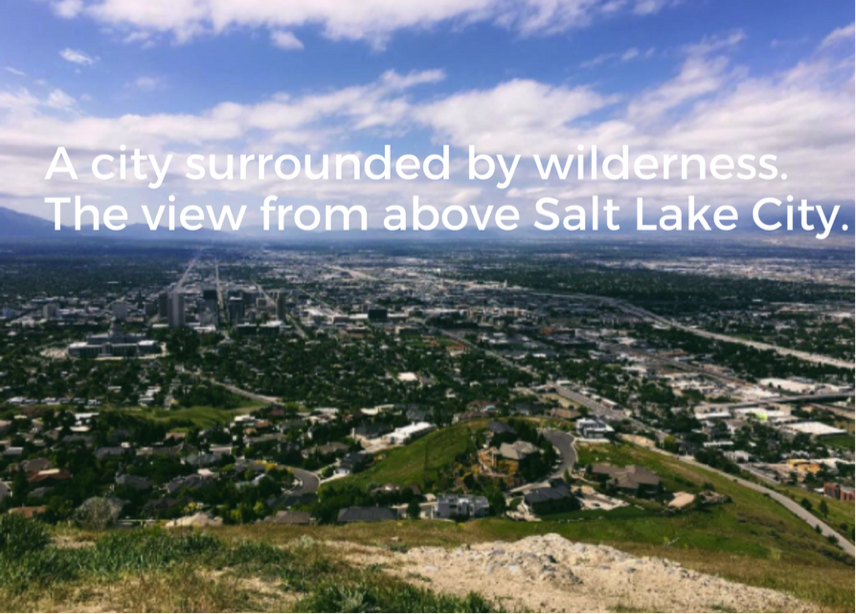
The next day at the conference was full tilt learning again while also meeting people from all over the world and talking about shared interests. Many attendees and presenters were from the big Western States whot are leaders in this field (Utah, Wyoming, Michigan, California) – in part due to the large species and migrating equine species that remain there - but there were also numerous people from Canada and researchers and experts from countries from as far away as Bulgaria, Africa, Columbia and Australia.
Road ecology – which involves assessing and determining how to reduce the impacts of roads and driving on both people and nature – is a growing problem and field of research around the globe. The impacts of roads and other linear habitat disruptions, such as agricultural fences, rail lines and pipelines, are occurring everywhere, and at a rapid pace. One recent study has shown that the pollution in the ditches is literally affecting the evolutionary rate of salamanders. Other research has shown that species populations can become genetically segregated as they learn to avoid roads or are unable to get across them alive.
I attended a presentation by Doug Feremenga – the head planner of the California Transportation Corridor Agency. He was the only person I met at the conference with a professional planning education, and I wanted to ask him whether he also thinks there is a need for more planners to be engaged in road ecology learning and practice. Municipal and transportation planners make a lot of on-the-ground decisions regarding road building and development approvals, but the planning profession is not teaching road ecology – at least neither of us think so. Since the conference, we have discussed doing an evaluation of what planning programs are teaching about ecology and transportation, and subsequently identifying what is missing and proposing what an intro to road ecology elective course would incorporate.
I also met Jessica Levine, Senior Conservation Advisor with The Nature Conservancy (TNC) of the One Forest Two Countries project, which Nova Scotia, PEI, and New Brunswick are a part of. Jessica is working to further the long-standing habitat connectivity project, and is organizing a Road Ecology in Canada conference in October. I will be presenting at the conference on the potential for citizen science involvement in wildlife vehicle collision prevention.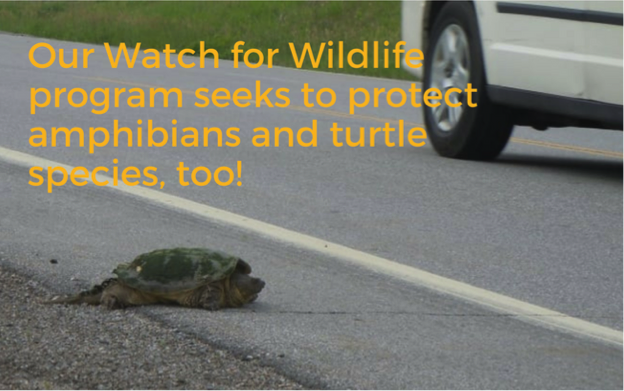
There is much to do in Canada to improve wildlife vehicle collision mitigation toward developing widespread knowledge and application of ecology and transportation concepts, methods and best practices. The science and practice of road ecology and associated technologies are rapidly developing. Species-specific collision mitigation fencing types, underpasses and overpasses, wildlife movement sensors, collision data tracking smartphone applications, the protection of marine life during bridge and road building, creation of pollination corridors so bees and butterflies find food sources along roadways and rail lines are all burgeoning practices that need to become regular and familiar methods of building roads.
The thing that stays with me the most from ICOET was the keynote presentation by photographer Joe Riis. His work documenting and mapping the migrations of pronghorn antelope and mule deer across Wyoming has contributed directly to: stopping one housing development (that was planned for a pinch-point connectivity section of their migration); and to the creation of a multi-million dollar wildlife crossing across the interstate where pronghorns died annually. Hundreds of pronghorn migrate 170 miles through Western Wyoming in search of food. This journey has occurred for thousands of years and is one of the longest migrations of land animals in the Western Hamisphere – but it is now increasingly perilous.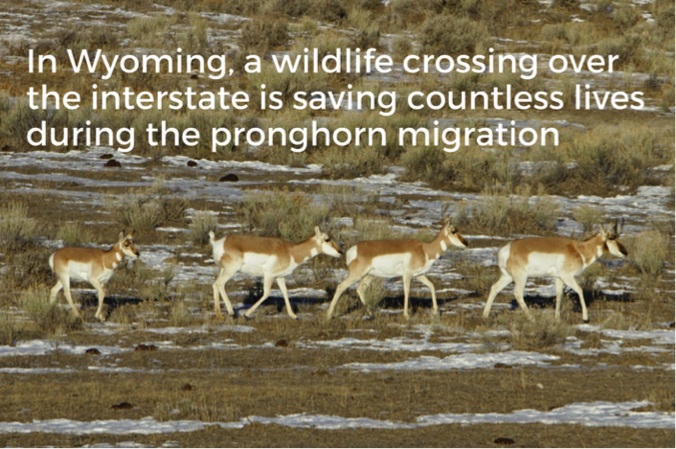
Riis has devoted his life to capturing vivid and heart-wrenching images of these animals as they move across wild and developed landscapes in order to survive and breed. At the end of his personal and moving presentation, a room of (predominantly male) department of transportation employees, ecologists, wildlife managers, researchers and policy experts gave Joe a standing ovation.
The moment during his presentation when he showed footage of the first time the migrating pronghorn found the opening in the fencing and started across the new wildlife crossing above the highway was one of the most moving things I have ever experienced, especially because it was in this room of people who are directly involved in this work. It can be a slow and difficult slog to prove the necessity of this kind of infrastructure, and you could have heard a pin drop in the room as the image of these animals successfully crossed the bridge. I doubt there was a dry eye in the room.
Making transportation corridors safer and less destructive to other life is one of the pressing issues of our time. The impacts have been underestimated and minimized until recent years; but the loss of species, the impacts of collisions on people and wildlife, and the widespread effects of transportation corridors on landscapes and habitats have become impossible to ignore.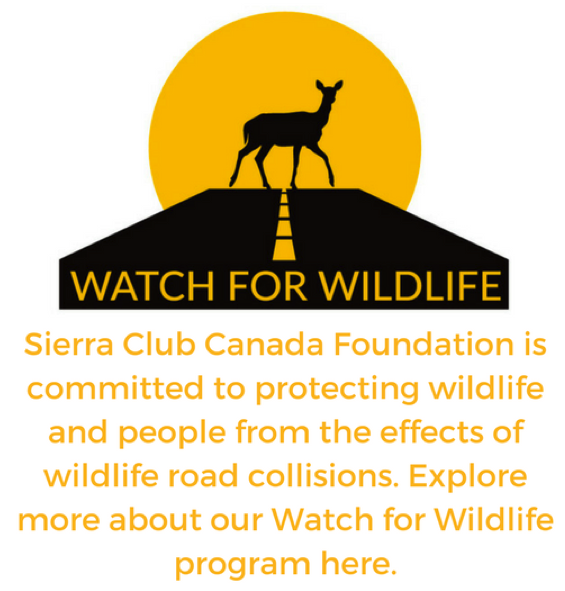
Coincidentally, I was formulating the Watch for Wildlife program at a time when our Edmonton Chapter successfully advocated for a wildlife underpass that is now providing safe passage for deer and other ungulates so they are able to move safely from the outskirts of Edmonton to their critical winter browsing areas across the highway. Wildlife vehicle collisions are an increasing problem across the country and the world - one that puts many wildlife species and people at risk, and Watch for Wildlife is our effort to reduce injury and mortality on our roads.
I feel privileged to have been among such esteemed company at ICOET, and to have had the opportunity to be there and learn all that I could. I will do what I can to spur the kind of energy, knowledge and collaborative effort that preventing wildlife vehicle collisions requires, and ICOET instills.
If you have an interest in learning more about road ecology work in Canada, the field of road ecology and the Watch for Wildlife program, please get in touch.
Wanda Baxter
Watch for Wildlife Program Manager
email: wandalynnbaxter@gmail.com
